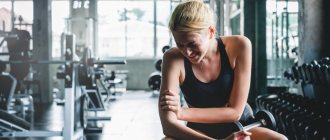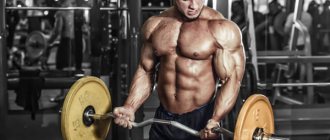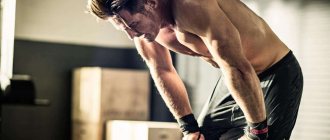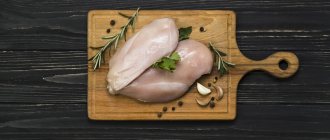How to get rid of muscle pain after training - many athletes face this problem. The question is especially relevant for beginners who are passionate about the idea of radically improving their body, but have not yet understood its capabilities. And having started to play sports intensively, without knowing laziness, they immediately began to perform quite complex sets of exercises.
24-48 hours after the first productive lesson, sore throat sets in, which can ruin not only a positive attitude, but also become an obstacle to the further program. It can be so strong that it prevents you from performing the usual simple actions - getting out of bed, going down the front steps or picking up a child.
If you have this condition, you must:
- make sure that these sensations are not a reaction to trauma and are truly harmless;
- take a warm bath or contrast shower, which will help quickly get rid of muscle pain after exercise
- continue to exercise as scheduled, but complete half of the plan, prefer aerobic exercises to strength exercises;
- you can skip a lesson if you feel a complete lack of strength and desire to do something;
- pain that lasts more than 5 days and the intensity does not decrease is grounds for a visit to the doctor.
Despite the fact that sometimes the discomfort can be very pronounced, SOMS (delayed onset muscle pain syndrome) goes away without any negative consequences.
Our additional services: Bioimpedance | Marutaka Massage | Pressotherapy | Ion-Detox
Causes of sore throat
Before giving advice on how and how to relieve muscle pain after physical activity, detailed information about this phenomenon should be given. Previously, scientists believed that lactic acid was to blame for pain - it reaches high concentrations in muscles during the breakdown of carbohydrates and the synthesis of adenosine triphosphate. Simply put, during intense physical activity. But later it was found that the level of lactate, along with other by-products of glycolysis, drops within a few hours - that is, even before the first unpleasant sensations appear.
SOMB occurs due to excessive swelling of muscle fibers and inflammation. The fact is that with unusual activity, micro-tears appear on the tissues - they are not dangerous in themselves. Nutrients and substances that promote regeneration, including prostaglandins and leukocytes, arrive to “repair” them. Their strong influx provokes swelling, which, together with inflammation, is the cause of pain.
Comment from Elena Morozova, a nutritionist at the weight loss clinic:
It should be understood that such a reaction of the body is quite natural if you had to experience an unusually large load. How can you avoid muscle pain after exercise without having to deal with intense burning and discomfort? Gradually increase the duration of classes and introduce new exercises with caution. The clinic’s specialists will help you create an individual program, following which you will not have to experience discomfort. A reasonable pace and correct technique mean high efficiency and pleasant fatigue.
Why does pain occur?
The main cause of muscle pain after training is unusual or too intense exercise. This happens when beginners are just starting to exercise or “old-timers” are switching to a new, more complicated training program or deliberately choosing a higher pace of exercise than usual.
But from a physiological point of view, everything is much more complicated. There are several scientific opinions regarding the nature of sore throat.
Microfractures
Today this is one of the most reasonable points of view.
During severe exercise, muscle fibers tear due to strong tension. These micro-tears, on the one hand, cause pain, and on the other, ensure muscle growth. Having detected an injury, the body uses internal reserves to restore the damage for the purpose of self-healing. The necessary hormones are released and protein synthesis is enhanced, which in this case is a building material. As a result of regeneration, muscles not only heal, but also increase in volume.
This kind of pain is called delayed (the second scientific name for soreness is delayed muscle pain syndrome), because it usually appears only the next day after training. There is also a scientific explanation for this. The micro-tears themselves are too minor to be of concern. But they lead to a local inflammatory process that develops within 24 hours. This is what causes discomfort. This means that the body is taking all necessary measures to recover and working hard on the damaged area.
If a person has not exercised for a long time or the loads were too powerful, the muscles may ache for 2 days. This means that there are a lot of micro-tears and the body simply did not have time to cope with them in such a short period of time.
However, this point of view has one weak point, due to which it does not stand up to criticism. Heat, which is contraindicated during an inflammatory process, helps eliminate muscle pain after training. But in this case, for some reason it does not aggravate it, but only helps speed up regeneration. There is only one more or less logical explanation so far: sore throat does not cause an increase in body temperature, so here the use of warm baths and warming massage is completely justified.
Lactic acid
But the role of lactic acid (lactates) in the occurrence of sore throat is now being questioned. Although until recently it was she who was accused of causing muscle pain after training. The scientific basis was the work of the German biochemist and physician, Nobel Prize laureate in medicine and physiology, Otto Fritz Meyerhof (mid-20th century). His opponent on this issue was our contemporary, Californian professor George Brooks.
The essence of the theory. At the moment of powerful physical activity (for example, when lifting a barbell), in order for the muscle fibers to cope with it, lactic acid is released into them. It is the result of complex biochemical processes occurring in the body. The more repetitions of the exercise are done, the longer the work continues, the more this substance accumulates. Anaerobic loads are characterized by a lack of oxygen, which is able to break down lactates, which leads to an increase in its concentration. It begins to irritate the receptors and causes severe muscle burning.
However, Brooks' research has shown that the irritating effects of lactic acid are short-lived. That is, an athlete lifting a barbell with a large weight feels increasing muscle pain with each subsequent second. It is described by many as a burning sensation and is associated with an increased concentration of lactic acid. But, as soon as the load stops (the barbell is thrown), these sensations quickly pass. And all because this substance is washed away by the increased blood flow, which is activated during training.
Based on this, it was concluded that if lactic acid is to blame for muscle soreness after training, it is only indirectly - if the bloodstream failed to wash it away without a trace.
However, these research results require further verification. Not everyone shares the opinion that muscle micro-tears alone are to blame for sore throat.
And other reasons
Metabolic products
Some experts believe that muscles begin to ache due to an increased concentration of metabolic products - free radicals and hydrogen ions. Since during physical activity the metabolism accelerates, they, as a result of the ongoing biochemical processes, begin to accumulate and cause discomfort, after which they are successfully eliminated from the body within 1-2 days, and the pain goes away.
Circulatory disorders
There is also an opinion that after training, the muscles, receiving tone, slightly temporarily increase in size (as if they swell a little due to the load) and compress the blood vessels. As a result, the blood supply to this area is disrupted, which causes pain.
What should not be considered a safe sore throat?
Acute painful sensations that cause suffering and significantly limit motor functions should not be ignored by a specialist. The cause may be a sprain or injury. If you have a fever, dizziness or nausea, you should not continue exercising.
Once you decide to spend significant time in the gym, you need to learn not only how to relieve muscle pain after a workout, but in general be attentive to your body’s signals, distinguish between harmless soreness and serious symptoms, since it is easier to prevent SOMB than to remove it. Signs of discomfort cannot be ignored. Self-attention is one of the important components for achieving the desired results - slimness, endurance, attractiveness.
If you don’t find your own comfortable pace and optimal load, it’s difficult to maintain the desire to exercise for a long time. And without regularity, you can’t count on sustainable results. So learn to recognize your body's cues and find your own comfortable pace, avoiding over-exertion and exhaustion.
It is necessary to distinguish between the following types of sensations that are possible after completing a workout:
- A mild burning and buzzing sensation in the muscles immediately after exercise is evidence that the muscles have worked well. In this state there is no stiffness of movement, it can even be pleasant. Goes away after proper rest.
- Delayed muscle pain does not occur immediately, but on the second or even third day; its intensity can vary depending on the nature and intensity of the exercises performed. The greatest discomfort is associated with strength training, which required unusually high tension. Also, SOMB occurs with a high probability even in experienced athletes who perform a new complex with a predominance of eccentric loads (when the fibers are stretched) over concentric ones (contraction occurs).
- Acute painful sensations that appear suddenly and interfere with movements are most likely a sign of injury. It is not advisable to practice self-medication, as you can harm yourself by applying a hot compress instead of a cold one or vice versa.
What to do if your hand ligaments become inflamed
A brush is a complex mechanism consisting of different elements. If one of these is damaged, the mobility of the entire limb is impaired. Inflammatory processes in the ligaments are a common problem that leads to discomfort and decreased performance. If left untreated, serious complications may occur or complete immobility and joint pain
and other negative consequences.
The ligaments in the hand are a dense elastic formation, which helps stabilize the joints and their mobility. There are a large number of joints in the hand, each of which supports a specific ligament and helps strengthen the muscles and bones. You need to understand that they are exposed to heavy loads every day. Sometimes situations arise that lead to an inflammatory process. Most often, the reason for this is injury or prolonged performance of the same type of actions. Inflammation of the hand often occurs in people:
- going in for sports;
- involved in the construction industry;
- artists;
- office employees;
- musicians.
Elderly people also have similar problems.
The main causes of the inflammatory process
A similar problem appears when various diseases occur, and the cause may be:
- injury;
- stretching;
- arthritis;
- osteoarthritis;
- peritendinitis.
Here are the most common causes of inflammation in the hand:
- lifting something heavy;
- performing physical exercises without preparation;
- regular and equal loads on the arm;
- fall or injury;
- joint infections;
- hypothermia;
- allergy;
- cartilage deformation;
- age-related changes;
- metabolic disorders.
Hand injury and joint problems
You must be careful, as injuries lead to inflammatory processes in the ligaments. People of any age are prone to them. Your hand can be injured both at work and at home. The wrist and thumb are most often affected. The symptom of a bruise is sharp pain when moving. There may be swelling, redness, and the hand begins to lose mobility. If such symptoms are observed, you should urgently consult a specialist for advice. It is necessary to understand that serious injuries lead to rupture of ligaments and the appearance of cracks in the bone.
Peritendinitis and arm pain
This is one of the most popular causes of inflammation in the hand area. Peritendinitis occurs due to prolonged stress on the hand. This is associated with embroidery, sedentary work, knitting, and playing sports. Sometimes an allergy or infection leads to inflammation. The pathology is manifested by pain in one of the damaged ligaments, which begins to intensify during palpation or movement. Over time, swelling and redness appear.
Joint pathology
The problem affects people of any age, but most often it is typical for those over 40. One of the most common inflammatory diseases is arthritis, which develops as a result of injury or infection.
Arthrosis affects the joints and fingers. The disease is chronic and progresses over time, destroying cartilage. Without treatment, joint deformation begins.
Carpal tunnel syndrome
Inflammation of the wrist ligaments is diagnosed, and the problem is typical for those who experience a variety of stress for a long time. The ligament begins to compress the nerves, causing severe pain, tingling, and numbness in the fingers. Without proper treatment, muscle atrophy is detected.
De Quervain's disease
This is what is called stenosing ligamentitis in the dorsal ligament of the hand. The disease is caused by trauma, infections, and monotonous movements. Pain in a certain place begins to bother you, swelling forms, which appears over time. There is usually no redness on the hand.
Main symptoms of inflammation
Inflammatory processes in the hand have signs:
- pain of varying intensity;
- discomfort while moving the hand;
- limited mobility;
- clicking or creaking due to joint instability;
- redness.
Symptoms and further treatment depend on what caused the problem. It is necessary to understand that the signs of inflammation can be different, so it is important to correctly diagnose. Only after an examination can a correct diagnosis be made. In addition to an external examination, an ultrasound, MRI, and radiography will be required. This is the only way to identify the affected joints and detect a pinched nerve or injury.
Features of therapy
As soon as discomfort appears in the hand area, measures must be taken. A little pain can lead to serious pathology. The inflammatory process will not go away on its own. Treatment will require special ointments with a warming effect and painkillers. Complex therapy is usually used, which is aimed at treating the underlying disease. Antibacterial agents are prescribed for infectious arthritis.
If the hand has been injured, first aid is provided to avoid swelling and cold is used. Compresses, physiotherapeutic procedures, therapeutic exercises, and massage are selected. If conservative therapy does not have the desired effect, surgical intervention must be resorted to. You should contact a specialist and follow all recommendations to avoid loss of arm mobility or surgical intervention.
You can use the recommendations of traditional medicine.
Potatoes, radishes, and horseradish root help well. One of these products is applied raw to the affected area. You can lubricate your brushes with clove, lavender, and geranium oil to speed up recovery. Author: K.M.N., Academician of the Russian Academy of Medical Sciences M.A. Bobyr
What actions are most likely to cause sore throat?
It is worth highlighting the work in which the fibers lengthen - this happens when performing eccentric exercises. They contribute to the formation of a large number of microdamages to muscle tissue, after such sets you have to think about how to reduce muscle pain after training and alleviate the condition.
During the recovery process, intensive cell proliferation occurs in the injured area, which promotes muscle growth. Therefore, this type of physical activity is popular in powerlifting, weightlifting and similar sports.
Eccentric exercises (push-ups with a slow lowering of the body and rapid extension of the arms, squats with weights or on one leg and many others) remain in demand, as they bring many benefits in addition to increasing muscle size:
- develop flexibility;
- speed up metabolism;
- contribute to the development of strength.
Training focused on the eccentric phase is not recommended for people with joint diseases or those who have suffered an injury.
Preferring these types of physical activity, you need to take special care to prevent post-workout pain. Following the sequence will help: a long warm-up, then stretching, and then the main complex. The final exercises should be relaxation exercises (or cool down). The last stage is often neglected, but this is wrong. Its importance is as great as warming up, since it helps the body smoothly adjust from intense activity to calm functioning. During this period, the heart rate and breathing slow down, sweating decreases, and the skin cools. A cool-down may consist of slow stretching and leisurely walking.
Benefit or harm
The answer to the question of whether muscles should hurt after training and how harmful it is to health depends on many factors.
Benefit
Muscles should ache after the first or intense strength training, as this indicates that the load was not in vain. This is a prerequisite that over time, muscle mass will gradually increase, thanks to increased protein synthesis, which acts as a building material.
Krepatura does not harm health and is normal if:
- occurs after the first workout or increasing the usual load;
- completely tolerable, does not require painkillers;
- short-term, lasts no more than 2 days after training;
- not accompanied by deterioration of health;
- decreases at rest and increases during moments of tension in the muscle group that was worked the day before;
- disappears within a few minutes after corrective measures are taken;
- Over time, it weakens and becomes almost invisible, as the body adapts to the stress.
“Proper” muscle pain after training often even causes positive emotions. Experienced athletes note that it is precisely this that allows them to feel their own strength and evaluate the results of their training.
Harm
You should worry if you have post-workout muscle pain:
- occurs after habitual training, when no changes have been made to the training program for a long time;
- appears after light fitness exercise or morning exercises;
- too strong, intolerable;
- lasts more than 3 days;
- accompanied by dizziness, increased body temperature, spots before the eyes, pressure surges, tachycardia;
- constant, that is, it does not subside even for a minute;
- no relief methods help.
Muscle pain is harmful if it lasts too long, does not go away within 2-3 weeks and occurs literally after every workout. This leads to detoxification due to high concentrations of lactic acid and metabolic products and a sharp deterioration in well-being.
Severe pain can be either a consequence of an injury or a symptom of the onset of an infectious disease (flu, for example). To exclude such a development of events, you should consult a doctor.
Pain caused by a serious muscle injury is the result of an improperly organized training process. The reason may be excessive weights, lack of warm-up, ignoring contraindications, non-compliance with the exercise technique, or incorrectly set settings on the simulator without taking into account anthropometric data.
With properly organized, moderate loads and well-chosen intensity of exercise, restrained muscle pain that occurs after training does not harm health.
How to relieve muscle pain after exercise
If you couldn't prevent SOMB, don't worry. There are ways to help you get through an unpleasant period easier:
- warm bath – relaxes the body, improves blood circulation, which helps accelerate regeneration;
- cold compress – fights inflammation;
- contrast shower - combines the positive effects of the previous two methods;
- massage – improves microcirculation, relieves excess tone, which accelerates cellular metabolism, which means microtraumas heal faster;
- warm-up - leisurely light exercises improve the condition, as they have a beneficial effect on chemical processes in cells;
- swimming - allows you to move as painlessly as possible, this method is especially good when the whole body hurts and it is difficult to apply ice or massage;
- medicinal ointments with an ingredient that stops inflammation and a slight warming effect;
- anti-inflammatory painkillers, such as ibuprofen or aspirin, help to survive an unpleasant condition with comfort, but slow down tissue repair because they interfere with the normal production of prostaglandins.
Nutritionist's comment:
Self-massage should not be too intense, as excessive exposure can lead to increased swelling and worsening of the situation. Therefore, it is better to use the services of a specialist.
Arthrosis and arthritis
Basically, arthrosis of the wrist joint is post-traumatic, that is, it develops as a complication after a dislocation or fracture of the wrist bones. Arthrosis of the wrist joint is characterized by symptoms such as a crunching sensation in the joint when moving and pain that occurs only with certain movements or when trying to bend and straighten the joint to the maximum, “all the way.” At rest, without movement, pain appears only if a person overloaded the sore joint a few hours earlier.
The mobility of the wrist joint with arthrosis is always reduced by 30-50%. But the appearance of the wrist joint affected by arthrosis remains practically unchanged - from the outside it looks almost healthy. Severe deformations of the wrist joint with arthrosis occur only when the disease was caused by a fracture of the wrist bones with their displacement.
We must remember that the wrist joint is one of the “favorite places” for inflammation in rheumatoid arthritis. And it is important not to confuse arthrosis of the wrist joint with this serious disease. Fortunately, distinguishing arthrosis from arthritis is usually quite simple. With arthritis, unlike arthrosis, pain is most often more severe at rest, late at night or in the morning. When moving, the pain, on the contrary, often decreases. In the afternoon, especially in the evening, arthritic pain almost always subsides completely.
The appearance of the wrist joints affected by rheumatoid arthritis, as a rule, changes significantly: there is either pronounced edema and “swelling” of the wrist joint, or a “sinking zone” in the area of this joint due to atrophy of its muscles.
It is also characteristic that with arthritis, damage to the wrist joints alone is extremely rare - any arthritis most often leads to inflammation of several joints at once; on the contrary, arthrosis of the wrist joint is an isolated post-traumatic pathology, usually affecting a single damaged wrist joint.
When treating wrist pain caused by arthrosis or arthritis, kinesiology, massage, reflexology, shock wave therapy, millimeter wave therapy, magnetic laser therapy and mud therapy are usually used.
How to Reduce Post-Workout Muscle Soreness with Food
The first thing the body needs to get in abundance in order to successfully cope with recovery from tiring work is water. During a fitness set, you should not deny yourself fluids.
To help your body successfully adapt to increasing loads, include it in your diet.
- Cherries and freshly squeezed juice - contain antioxidants (anthocyanins), which successfully fight inflammation, promote regeneration and reduce discomfort.
- Vegetables and leafy greens - a vitamin complex obtained from fresh foods that has a beneficial effect on the body and damaged tissues. Particular attention should be paid to cruciferous vegetables - radish, cauliflower, broccoli, kohlrabi - they reduce cortisol levels, fight free radicals, and have a positive effect on the functioning of the thyroid gland.
- Fish with a significant content of omega-3 polyunsaturated fatty acids are herring, salmon, and halibut. Optimizes regeneration, allowing you to return to normal in a short time.
- Foods with a high glycemic index - watermelon, persimmon, dates - restore the supply of muscle glycogen, which serves as a source of energy for productive physical activity.
- Eggs are a product that contains a lot of protein and, in particular, leucine (an amino acid that promotes muscle growth).
With proper balanced nutrition, the body will receive all the necessary nutrients for a speedy recovery and energy to continue the sports program.
Symptoms and treatment of deforming osteoarthritis of the hands
Since in the later stages, carpal osteoarthritis is practically untreatable, it is very important to notice the first signs of the disease in time.
In recent years, osteoarthritis, affecting a variety of joints, has become increasingly common. According to expert estimates, it affects 10-13% of the population. Most often, the disease starts in people over 40 years of age. And with each subsequent year, the risk of developing the disease increases.
Symptoms of osteoarthritis
Osteoarthritis of the hands is one of the varieties of this group of diseases. With it, the cartilaginous tissue of the finger phalanges gradually deforms and collapses. The insidiousness of the disease is that it begins unnoticed, with mild and short-term pain in the area of the hands and fingers (during physical activity, climate change), to which few people pay attention. However, over time, the pain increases and becomes constant, deformation occurs in the small joints of the hands, which are regularly under load. In the early stages, incipient osteoarthritis is indicated by crunching of the fingers, swelling in the joints and an increase in their volume, discomfort when moving the fingers and limited mobility of the hands, and curvature of the joints. If you notice such symptoms, consult a doctor (general practitioner, rheumatologist) as soon as possible. Diagnosing deforming osteoarthritis of the hands and fingers is quite easy - sometimes just a visual examination by a specialist is enough. In some cases, an x-ray may be needed to accurately determine the stage of the disease.
Risk factors for carpal osteoarthritis can be either hereditary (including due to a “breakdown” in the type 2 collagen gene) or acquired. The latter include monotonous long-term stress on the hands (including computer work), excess weight, previous joint surgeries and injuries, some infectious diseases, stress, hypothermia, and endocrine diseases. For example, scientists have calculated that the fingers of a person typing 8 hours a day on a computer keyboard are subjected to a daily load of 16 tons! In addition, the risk of the disease increases with age - over the years, the cartilage tissue of the joints of the fingers becomes thinner, and its natural elasticity is impaired. In women, an additional risk factor is the postmenopausal period, during which a deficiency of estrogen hormones develops.
Osteoarthritis of the hands treatment
As mentioned above, with advanced stages the disease is almost untreatable. Unlike other joints, endoprosthetics of hand joints are not performed. As a result, the prospect of ending up in old age with non-functional hands due to an untreated illness is not so bleak. So the sooner osteoarthritis of the hands is diagnosed, the easier it is to cope with its manifestations.
Unfortunately, according to doctors, in the early stages of the disease only every fifth person turns to specialists for help. As the head of the department of metabolic diseases of bones and joints with the center for the prevention of osteoporosis of the Russian Ministry of Health, Professor Lyudmila Alekseeva, says, the treatment of this disease is always individual. It is a complex of drugs, physiotherapy and other medical techniques.
To relieve pain, non-steroidal anti-inflammatory drugs are most often prescribed - diclofenac, paracetamol, naproxen, ibuprofen, movalis, etc. Like all symptomatic drugs, they do not affect the cause of the disease in any way. It should also be taken into account that they have many unpleasant side effects (including increased blood pressure, damage to the gastrointestinal tract, destruction of cartilage, etc.), so they are recommended to be taken in short courses and only under the supervision of a doctor. In a number of situations, they, alas, do not help, and then the patient has to be prescribed opioid analgesics. There are also slow-acting drugs from the group of chondoprotectors - they relieve pain while slowing down the destruction of cartilage.
According to Anton Naumov, professor of the Department of Therapy, Clinical Pharmacology and Emergency Medicine at Moscow State Medical University, today the inclusion of drugs with chondroprotective effects in treatment regimens for patients with osteoarthritis is most promising. In very serious situations, when the pain is very intense, injections of hormonal drugs are used (due to serious side effects, such therapy is performed no more than 3 times a year).
In addition, patients with osteoarthritis of the hands are often prescribed warming physiotherapeutic procedures - magnetic therapy, laser treatment, shock wave therapy. Balneotherapy also has a good effect, so balneological sanatoriums are recommended for patients with osteoarthritis.
Therapeutic massage is also considered an effective method of treatment, which improves blood flow to damaged areas and relieves spasms (it is carried out during remissions or when there is no severe pain), as well as therapeutic exercises. For example, periodically squeeze with tension for a few seconds and then unclench your hands. Or rub your palms until warm. And yet, the doctor selects therapeutic exercises for each patient individually - they help restore joint mobility and strengthen muscles.
How to prevent the disease from occurring? Doctors recommend, first of all, to monitor your diet. The diet should have enough calcium and vitamin D. People over 40 years of age and all postmenopausal women should definitely take multivitamin complexes. Saturated animal fats, spicy, salty and smoked foods should be avoided. Fish broth and jelly based on gelatin or agar-agar are rich in natural chondoprotectors.
Doctors recommend that office workers take 15-minute breaks with a warm-up for their fingers (remember how in school: “we wrote, we wrote - our fingers were tired”?) every two hours. In addition, if possible, it is better to use a special ergonomic keyboard that ensures a physiological hand position while working.
What to take care of so you don't have to ask yourself how to relieve muscle pain after a workout
It is important to start with a leisurely warm-up, gradually preparing and warming up the muscles. This measure will allow the body to adapt well to subsequent exercises, work productively, and also get maximum pleasure from physical activity.
When starting a fitness program, you should exercise restraint. Do not try to perform the complex of an experienced athlete in the first lesson - this will not bring you closer to the desired result. The best solution is to do 10% of the optimal load of the selected program. Next time add the same amount. Increase the intensity systematically, even if it seems suspiciously easy to do the exercises at a reduced volume. This approach will save you from having to think about how and how to relieve muscle pain after training.
After completion, drink water without restrictions; a contrast shower is also recommended. These simple measures will help maintain a high rate of metabolic processes and blood microcirculation in tissues.
After completing a fitness set, you need to eat; foods rich in proteins and vitamins A, C, E will be especially useful. The best solution would be to create a special post-workout diet.
Nutritionist advice:
Dehydration significantly slows down recovery in the body and can cause body soreness even in experienced athletes. Therefore, the drinking regime must be taken seriously.
Why do muscles hurt after training?
Muscle pain from exercise can be caused by a number of reasons.
All of them are divided into two types: physiological and pathological. Let's look at each type in more detail. 1. Physiological – this type includes pain after training that was not caused by injuries or concomitant diseases.
- accumulation of lactic acid in muscles
Muscle work is always an energy-consuming mechanism that requires the ATP molecule formed during the breakdown of glucose. The source of glucose formation is the polysaccharide glycogen, which is found in large quantities in muscle fibers. During training, with high physical activity, accompanied by the breakdown of glycogen, oxygen deficiency may occur, the volume of oxygen consumption during this period increases significantly. In this case, the process of glycogen processing does not proceed along the aerobic path (with breakdown into water, carbon dioxide and the formation of ATP), but along the anaerobic path. This version of the process is absolutely not beneficial for the body, because the final product of glycolysis will be lactic acid or lactate. Lactic acid settles in muscle tissue, putting pressure on nerve endings, and you suddenly realize that your legs or arms hurt after a workout. In the future, the bloodstream will cleanse the accumulated acid and remove it naturally, but this process will be preceded by unpleasant sensations.
- delayed onset muscle pain
Many athletes quite often complain of muscle pain, which occurs a day or even two days after training. What is the reason? Don’t blame lactic acid, because the body has already cleansed itself of it. The nature of the appearance of this pain is the so-called sore throat effect - microdamage to the connective structural fibers. The appearance of such tiny tears encourages the body to more actively stimulate healing functions. Inflammation caused by ruptures is what causes pain.
2. Pathological – that is, the pain from training that causes direct harm to health.
- overtraining
In pursuit of quick results, many novice athletes neglect safety rules, loading the body with training without a break. As a result, micro-tears in cells do not have time to heal, but only increase; the body, instead of sending proteins to muscle growth, engages in enhanced restoration and healing, and you lose muscle mass and experience pain.
- damage to joints, ligaments, tendons
Sharp pain coupled with an elevated temperature should not only alert you, but actively encourage you to seek medical help. Damage of this nature requires careful monitoring and therapy.
- muscle reactivity
During intense sports, the water-salt balance is disrupted, which can lead to pain and even cramps. This is why it is important to drink water during exercise to avoid dehydration.
It’s impossible to play sports without sore throat – that’s a myth
The idea that pain is an integral part of an athlete's life has now been refuted. Previously, it was believed that soreness was the only sure sign of productivity. In fact, with regular exercise and technical performance of the exercises, painful sensations should not occur. After a good workout, there is usually pleasant fatigue and a slight buzz.
If you constantly exercise according to the same program, but often experience aching pain, then you should revise the plan downward.
Specialists working at the Slavic Clinic will help you adjust the course taking into account the individual characteristics of your body, age and desired results. By following the recommendations of professionals, you will lose weight comfortably - watch how your volume disappears, muscle relief appears, flexibility increases - without having to endure unpleasant sensations. Look at our Clients' Acknowledgments and Success Stories - View
Causes
Injuries
These include bruises, dislocations, fractures, and sprains of the joint capsule. Injuries occur from a blow, a fall on the hand, or excessive stress. The occurrence of injuries is facilitated by metabolic and hormonal system disorders, in which joint tissues lose their elasticity and become thinner. When injured, the pain is usually acute and joint mobility is limited.
Arthritis
Inflammation of the joints caused by chronic injury, bacterial or viral infection, deposits of uric acid salts, and malfunction of the immune system. All arthritis is accompanied by joint pain, but the intensity and nature of the pain depend on the underlying cause of the inflammation. Acute arthritis is characterized by severe pain with hot swelling, while chronic arthritis is characterized by dull and aching pain, morning stiffness, swelling without redness and fever.
Arthrosis
A disease that affects the cartilage tissue that covers the head of the bone. With arthrosis, premature aging processes begin: the cartilage cracks, loses its elasticity and becomes thinner. At an early stage, the joints do not hurt, but they often crack. Then pain appears. In the advanced stage of arthrosis, cartilage disappears, which leads to immobility and deformation of the joints.
Tendinitis and styloiditis
Tendon inflammation. The pain is aching and aching, intensifies with movement and physical activity. The joint loses mobility, and the skin over the tendon may swell and turn red.
Osteochondrosis of the cervical spine
The nerve that provides sensation to the hands is connected to the spinal nerves of the cervical spine. With osteochondrosis and its complications - protrusions and hernias - the nerves are pinched and one or both arms begin to hurt. The pain is shooting, occurring all over the arm at once.











